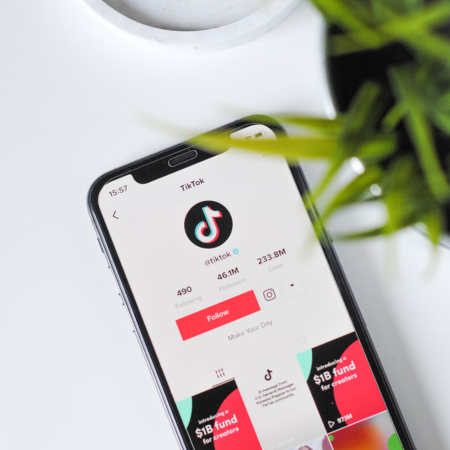TikTok vs Instagram: Which is Best for Business?

TikTok and Instagram stand out as two of the most influential platforms, each offering unique opportunities and challenges for businesses.
As these platforms continue to evolve, the question of which is best for business use becomes increasingly complex. This article delves into the pros and cons of TikTok and Instagram, aiming to provide businesses with the insights needed to navigate these digital landscapes effectively.
Like this post? Want to be the first to get more like it? Subscribe to our newsletter for free.
In need of a digital agency to take your business to new heights? We can help.
TikTok: The Rising Star
Launched in 2016, TikTok has skyrocketed in popularity, especially among Gen Z and younger Millennials. It's a platform built on short, engaging videos, offering a unique blend of entertainment, creativity, and virality.
Pros of TikTok for Business
- High Engagement Rates: TikTok's algorithm is designed to showcase engaging content, often leading to higher engagement rates compared to other platforms. This can be a boon for businesses looking to increase brand visibility and interaction.
- Viral Potential: The platform is known for its viral content. Even businesses new to TikTok can gain significant exposure if their content resonates with the audience, thanks to the algorithm that promotes content based on interests rather than follower count.
- Innovative Advertising Options: TikTok offers various advertising formats, including branded challenges and in-feed ads, that can be creatively used to engage users and promote products or services in a way that feels native to the platform.
Cons of TikTok for Business
- Demographic Limitation: While TikTok's audience is expanding, it's predominantly popular among younger users. Businesses whose target market skews older may find it challenging to reach their audience on this platform.
- Content Creation Learning Curve: The unique and often trend-driven content on TikTok can require a significant investment in creativity and time to produce videos that stand out and capture the audience's attention.
- Regulatory risk: With the prospect of TikTok being banned in the United States, businesses need to ensure they're not betting their entire strategy on the platform, or any single platform.
Instagram: The Established Contender
Instagram, launched in 2010, has become a staple in social media marketing strategies. Known for its visual content, including photos, videos, and Stories, Instagram offers a broad suite of features for businesses.
Pros of Instagram for Business
- Diverse Audience: Instagram boasts a wide-ranging demographic, making it suitable for businesses targeting various age groups. Its established user base is a significant advantage for reaching a broader audience.
- Comprehensive Business Tools: Instagram provides businesses with extensive tools for marketing, including insights, shoppable posts, and the ability to link products directly in Stories and posts, facilitating a seamless shopping experience.
- High Engagement with Visual Content: As a platform centered around visual storytelling, Instagram is ideal for brands that rely heavily on visuals to communicate their value proposition and engage their audience.
Cons of Instagram for Business
- Intense Competition: With its popularity, Instagram is a highly competitive space for businesses. Standing out requires not only high-quality content but also a strategic approach to hashtags, engagement, and advertising.
- Algorithm Challenges: Instagram's algorithm can make it difficult for businesses to achieve visibility without paid promotion. The platform's focus on engagement means that content must consistently resonate with audiences to appear prominently in feeds.
Integrating TikTok and Instagram into Your Business Strategy
While each platform has its strengths and weaknesses, the decision of which to use should not be an 'either/or' but a 'both/and' approach, depending on your business goals, target audience, and content capabilities.
Using Both Platforms Harmoniously
- Leverage Unique Strengths: Utilize TikTok for its viral potential and engagement with younger audiences through creative, trend-driven content. Use Instagram to reach a broader demographic with visually appealing posts, Stories, and direct product links.
- Cross-Promote Content: Cross-promoting content across both platforms can increase your reach and engagement. For example, sharing TikTok videos on Instagram Stories or Reels can capture the attention of audiences on both platforms.
- Adapt Content Strategically: While cross-promotion is effective, it's also crucial to adapt content to fit the unique context and audience of each platform. What works on TikTok might need tweaking to resonate with Instagram users, and vice versa.
Conclusion: A Dual-Platform Approach for Business Success
In the digital marketing landscape, TikTok and Instagram offer unique opportunities for businesses to connect with their audience. While TikTok offers unparalleled engagement and viral potential, particularly among younger demographics, Instagram provides a broad reach and robust business tools suited for a diverse audience. Rather than choosing one over the other, businesses should consider leveraging the strengths of both platforms to maximize their social media presence. By understanding the pros and cons of each platform and tailoring content accordingly, businesses can create a comprehensive strategy that harnesses the power of both TikTok and Instagram for greater brand visibility, engagement, and ultimately, success.
Like this post? Want to be the first to get more like it? Subscribe to our newsletter for free.
In need of a digital agency to take your business to new heights? We can help.




Leave a comment